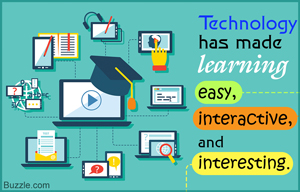The Impact of Technology on Education
The Impact of Technology on Education
Today, schools are being pressured more and more to improve the technology they use and teach in the classrooms. Parents are placing this pressure on schools so that their students have the skills needed to compete in the real world job market. Students are placing pressure on the schools to improve technology by having more knowledge of
current technology than the school’s staff. Teachers in turn are placing emphasis on the schools to improve technology they want to increase efficiency of information sharing, grading, and communication in the classroom. Businesses place an emphasis on technology in schools so that the schools adequately prepare their future employees, the students. The government is also placing pressure on schools to improve technology in the classrooms so that Americans can compete, along with helping prepare successful employees to help improve the economy in the future. These pressures are welcomed however, as schools are eager to improve their current use of technology in the classroom.
Positive Effects .
Research

Effects
If a school's library is outdated or lacking in a selection of titles, a student might find it difficult to compile the necessary research for an essay or research paper. As long as the school has a computer lab, students are able to use the Internet and digital encyclopedias to obtain the research they need. While students should be wary of the legitimacy of some of the content they read online, many schools use software like the Encyclopedia Britannica to help students do research.
Distance Education
In the past, students could take distance or continuing education classes, also called "correspondence courses," at community colleges and universities. After enrolling in a course of this style, a student would receive course documents in the mail and would be required to mail assignments to his teacher at the educational institution. The process could be long and complicated. Thanks to technology, continuing education students can take courses over the Internet at their convenience.
Web Seminars
Not every school has the resources and budget to send its students on field trips related to the course of study. When this is the case, the students' education can suffer. But thanks to technology, students can use the Internet to virtually attend Web seminars put on by museums and other educational institutions. NASA, for instance, offers a program that allows students to talk to astronauts in space.
Negative effects .
Cost
Equipping a classroom with computers or supplying the entire student body with laptops is a significant cost for any school. In addition to the initial purchase costs, there are costs for maintaining networks, maintaining the computers and routinely upgrading the hardware and software. Though "bring your own device" policies may relieve the school of some of these costs, the policies shift to students and their families, who may not be able to afford the hardware and software. Electronic textbooks may not be significantly cheaper than hard copies, and when students are responsible for purchasing them the cost may be higher as used copies cannot be bought or sold.
Limited Learning
Students may be more enthusiastic about studying a subject if they are preparing a PowerPoint presentation or a video clip instead of a written essay. However, they might spend more time and effort on the presentation than researching the subject, and complete the project knowing very little about the subject. Participation and enthusiasm do not necessary lead to learning. Electronic texts can also limit learning as they are less interactive than paper textbooks. Many e-readers do not allow highlighting or notes, and even when they do, it is more complicated than marking up a paper copy. Furthermore, an electronic text can be harder to browse through than a hard copy.
Student Distraction
The technology-enabled classroom offers access to information, but it also offers many more distractions. Games on devices, text messaging, email and websites all compete for students' attention, taking that attention away from the subject on which they are supposed to be focusing. The technology can also lead to dangerous situations as students can be exposed to inappropriate online materials or predators in online places such as chat rooms.
Teaching is sharing
Thanks to the application of technology, education has become more collaborative. With plethora of information so easily available to students, they can be a part of the process; they don't need to remain at the receiving end. Owing to the use of technology, subject experts can come together to formulate courses, design assessments, and better the process of teaching. The day isn't far, when students located in different parts of the world will be able to seek advice from experts spread across the globe. Education will be customized then. It will cater to different learning needs and varying grasping abilities and interests of students.
Technology is a teaching aid
Computers offer an interactive audio-visual medium. PowerPoint presentations and animation software can be used to present information in an interactive way. Owing to the audio-visual effects, this way of teaching invites greater interest from students. The method is equally helpful for teachers. Projectors and screens facilitate simultaneous viewing of information by a large number of students. Addressing systems using microphones and speakers make it possible for teachers to reach a larger number of students simultaneously. These teaching aids have led to improvements in student attendance and their attentiveness in class. Interactive media have proven to be useful in increasing students' concentration levels.
Conclusion
The importance of technology in education cannot be stressed enough. The introduction of technology in the educational field has made the process of learning and knowledge-sharing, a more interactive and pleasurable experience. Perhaps, the greatest impact of technology on education is the change in perspective. The paradigm shift in thinking from local to global can be attributed to technology. Indeed technology is one of God's greatest gifts to mankind.